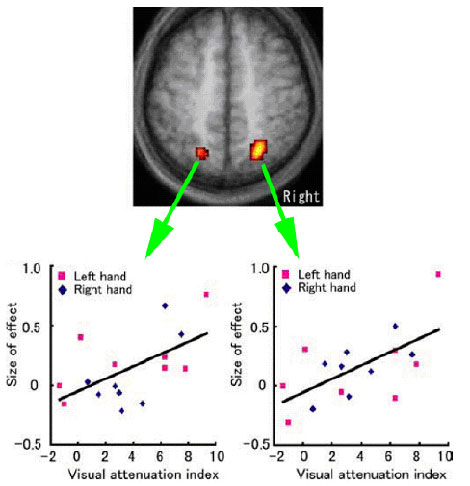Hagura N, Takei T, Hirose S, Aramaki Y, Matsumura M, Sadato N and Naito E (2007) Activity in posterior parietal cortex mediates the visual dominance over kinesthesia. Journal of Neuroscience 27: 7047-7053.
When both visual and kinesthetic information of a limb are available, vision is usually the dominant source of information used to perceive the spatial location. In this study, we conducted behavioral and functional magnetic resonance imaging (fMRI) experiments to examine the brain mechanisms underlying the visual dominance over kinesthesia in perceiving the position of a hand. We used tendon vibration to induce an illusory percept of flexion movement of an immobile hand, while the participants viewed a live image of either the vibrated or nonvibrated static hand through an on-line video camera. The intensity of illusory movement was significantly attenuated (for both the left and right hands) only when the participants viewed the static image of the vibrated hand. The fMRI study showed that the posterior parietal cortex (PPC) is specifically involved in the attenuation of illusory movement and that the activity of the PPC was associated with the degree of attenuation. This indicates that PPC is involved in the multisensory processing that occurs when vision overrules simultaneously available kinesthetic information for estimating the spatial location of a limb. It is thus suggested that the human parietal cortex may play a critical role in the maintenance of a coherent body image when the brain receives potentially conflicting multisensory information from the body.
